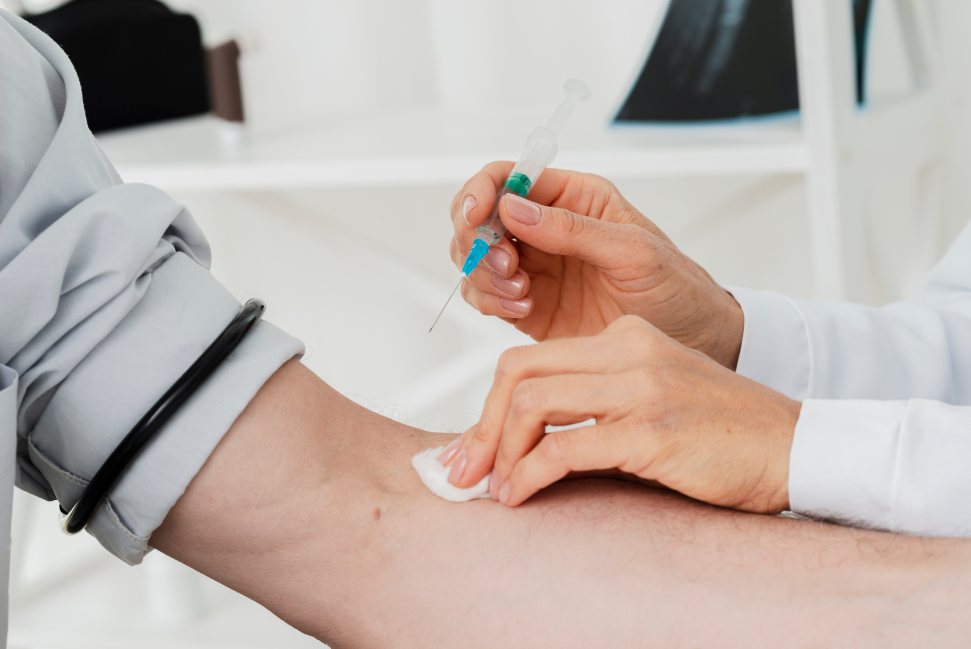
Nicotinamide adenine dinucleotide, or NAD+, is one of the most potent anti-aging molecules you can put into your body. NAD+ works by terms of decreasing the rate in which your telomeres shorten, the process that causes you to age. In short, NAD+ helps your cells remain "young." This molecule allows sirtuins, a family of proteins that regulate cellular health, to run correctly. You can find sirtuins in everyday foods like blueberries, cacao, and chocolate. However, sirtuins can only function in the presence of NAD+. As a result, it has come into high demand for its dramatic anti-aging benefits.
The FDA and pharmaceutical companies have made NAD+ available through oral supplements. However, the molecule's effects are more noticeable when injected intravenously, an exceptionally efficient method that allows for 100% bioavailability.
What are telomeres?
Telomeres are distinctive structures found at the ends of our chromosomes. They consist of the same short DNA sequence repeated over and over again. Telomeres serve three primary purposes:
- They help to organize each of our 46 chromosomes in the nucleus of our cells.
- They protect our chromosomes' ends by forming a cap, much like an aglet on a shoe. If the telomeres were not there, our chromosomes might end up sticking to other chromosomes.
- They allow the chromosome to be appropriately replicated during cell division.
So why does this matter? Well, as we age, telomeres shorten during cell division. Something like 25-200 telomeres is lost every time a cell divides itself. The more abundant telomeres are in our cells, the slower our body ages.
Other bodily processes, such as oxidative stress, also have a direct impact on telomere length. Oxidative stress is directly affected by lifestyle, so diet and stress decisions can hurt our telomere length.
How does NAD+ fit into all of this?
Ben Greenfield, a New York Times-published fitness and nutrition guru, explained the correlation between NAD+ and telomere health on the Joe Rogan Podcast in 2018.
"Your NAD+ to NAD+H ratio is highly reflective of your telomere health."
The more NAD+ present in your body, the slower the rate at which your telomeres shorten. In short, you directly decelerate your biological clock.
Your body can process NAD+ both orally through capsules and intravenous injections. Greenfield — who has been testing the rate at which his telomeres shorten with a company called TeloYears — proclaimed that the two methods that have had the most profound effect on these tests are intravenous stem cell and NAD+ injections.
"My biological age right now, which started at 37 when I was 34 and then decreased to 35 when I tested again at 36 years old, is 20—in terms of the rate at which my telomeres are shortening."
Now the test does not account for every single cell in your body, so it's not an iron-clad measure with a ton of research behind it. Still, it's a corollary to our biological age. According to Greenfield, "It's the best we have right now."
Benefits of NAD+ IV Therapy
NAD+ is an essential cofactor in all living cells involved in aging's fundamental biological processes. The benefits of NAD+ therapy are wide-reaching. It is looked at as a "brain restoration" treatment that promotes increased neurological functions such as memory and concentration while also helping prevent aging's side effects. Researchers at Harvard have discovered that elevated levels of NAD+ can slow or even reverse our biological clock!
Who should get NAD+ IV therapy?
At some point, our bodies will begin to produce less and less NAD+. By the time we are middle-aged, they will have already dropped to half of what they were when we were in our youth. This dip in NAD+ usually is what leads to fatigue and stress in our later years. High levels of drugs and alcohol deplete our natural source of NAD+ as well. That is why NAD+ has been most commonly linked with treatment centers that specialize in overcoming addiction.
The Reality of the NAD+ Therapy
NAD+ therapy typically lasts anywhere from two to six hours. While it is not the case for all patients, some people find NAD+ therapy an uncomfortable experience. Some individuals report feeling nausea, chest tightness, and lightheadedness, although these usually do not last the entirety of treatment. The lasting impact that it has on your body outweighs the negatives of the procedure. In fact, most individuals feel the benefits of NAD+ therapy almost instantly post-drip.
"I'm doing this once a week now," said Greenfield to a dumbfounded Rogan, "it's the most painful 10 to 20 minutes of my week, but you feel like Superman after, it's great".
This article was originally published at iveeapp.com.
You may also like
10 Simple Yet Unique Ways To Cope With Stress
Why Hiking Is Great For Your Health
Smart Tips to Keep Your Family Healthy
How to Maintain a Healthy Work-Life Balance
